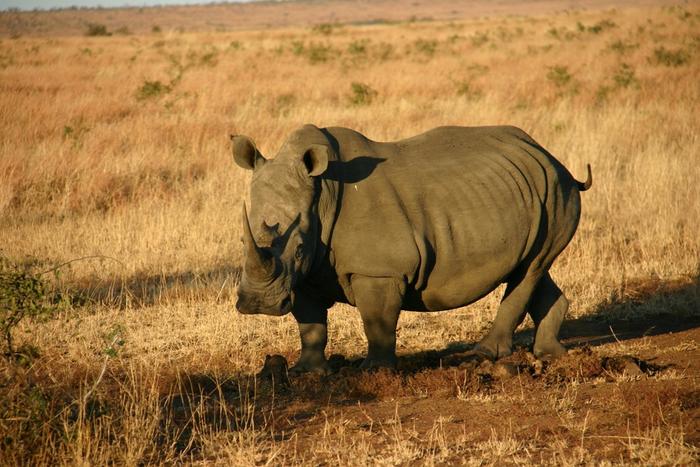Southern Africa contains the vast majority of the world’s remaining populations of both black and white rhinoceroses (80% and 92%, respectively). The region’s climate is changing rapidly as a result global warming. Traditional conservation efforts aimed at protecting rhinos have focused on poaching, but until now, there has been no analysis of the impact that climate change may have on the animals. A research team from the University of Massachusetts Amherst has recently reported in the journal Biodiversity that, though the area will be affected by both higher temperatures and changing precipitation, the rhinos are more sensitive to rising temperatures, which will quickly increase above the animals’ acceptable maximum threshold. Managers in national parks should begin planning adaptations to manage the increased temperatures in the hopes of preserving a future for the rhinoceroses.
The African continent has seen its average monthly temperatures rise by .5 – 2 degrees Celsius over the past century, with up to another two degrees of warming projected for the next 100 years, according to the Intergovernmental Panel on Climate Change’s (IPCC) high greenhouse gas emissions scenario. It is also well known that the changing climate will disrupt historical precipitation patterns—but which of these, temperature or rainfall, will have the most impact on a species, like white and black rhinos, that have long been the target of conservation efforts?
The question is especially important for rhinos because they don’t sweat, and instead cool themselves off by bathing and finding shade.
“Generally speaking, most, if not all, species will, in one way or another, be negatively affected by the changing climate,” says lead author Hlelowenkhosi S. Mamba, who completed this research as part of her graduate studies at UMass Amherst. “It is therefore important for conservationists to conduct macroecological assessments over large areas to catch trends and model futures for some of the world’s most vulnerable species to prepare to mitigate climate change’s effects, hence minimizing global biodiversity losses.”
To understand how our changing climate will affect rhino populations, Mamba and senior author Timothy Randhir, professor of environmental conservation at UMass Amherst, focused their efforts on the five large national parks in South Africa, Namibia, Zimbabwe, Kenya, Botswana, Tanzania and eSwatini that are home to most of the rhinos. The parks represent diverse landscapes.
Mamba and Randhir then modelled two scenarios for each of the parks: the IPCC’s high-emissions scenario and a more moderate emissions scenario. They projected temperature and precipitation for each of the scenarios out to 2055 and 2085 to arrive at a probability that each park would remain suitable for the rhinos.
They found that each park will see approximately 2.2 ºC warming by 2055 and 2.5 ºC by 2085 under the moderate emissions scenario. Under the high emissions scenario, each park will be warmer by approximately 2.8 ºC in 2055 and 4.6 ºC in 2085.
Nearly every park will become increasingly drier as emissions increase, with the exception of one, Tsavo West National Park in Kenya, which will see more rainfall.
This is all very bad news for the rhinos, because the team also found that, though the change in precipitation will not be ideal for the rhinos, the changes in temperature are greater than what the species can bear.
“The temperature conditions in all study parks will become increasingly unsuitable for both species, but it is predicted that white rhinos will be affected earlier than black rhinos,” the authors write. “All the parks are showing drastic changes in the occurrence probability of rhinos.” And under the high-emissions scenarios, the probability of occurrence of either species shrinks to zero by 2085.
The worst news involves Etosha National Park, in Namibia, and Hlane National Park, in eSwatini, both of which will become too warm for rhinos in either scenario.
But to be forewarned is to be forearmed. “This paper highlights the importance of using climate predictions for both park and rhino management,” says Randhir. “We propose that park managers think now about increasing water supplies, tree cover, watching for stress and planning to allow rhino migration as the world warms.”


